Highlights of Route 66




with Archers Holidays, June 2015





Another 7am bags/8am bus day. We took advantage of the included buffet breakfast in the lobby before we said goodbye to Diesel and his human, Misha. We piled on to the bus to head to our first stop of the day.
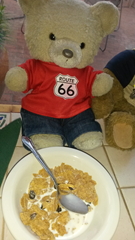
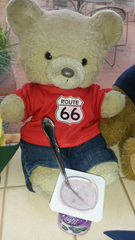
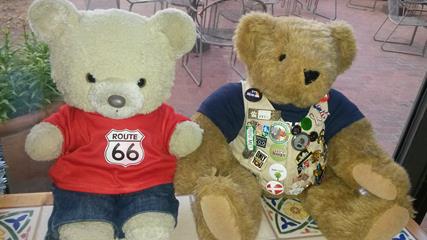
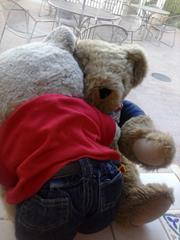
We took a few photos on the way - of the hotel pool, the skyline and also this great looking sky.
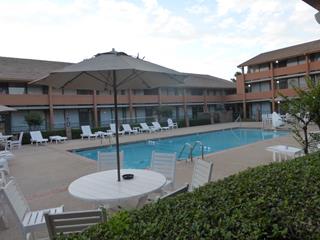
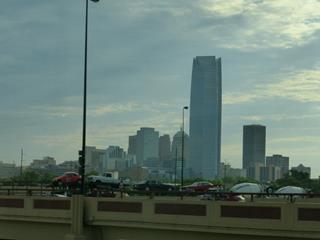
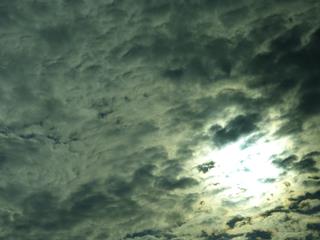
We arrived at the Centennial Land Run Monument.



 This commemorates the famed Oklahoma Land Run where unassigned lands were opened up with more than fifty thousand people vying for 160 acre acres of land - a town lot. On 22 April 1889, 12 noon, competitors rushed onto the land, staking homesteads and creating towns.
This commemorates the famed Oklahoma Land Run where unassigned lands were opened up with more than fifty thousand people vying for 160 acre acres of land - a town lot. On 22 April 1889, 12 noon, competitors rushed onto the land, staking homesteads and creating towns.
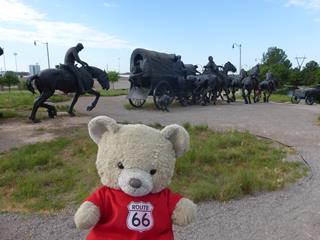
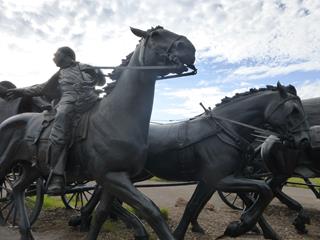
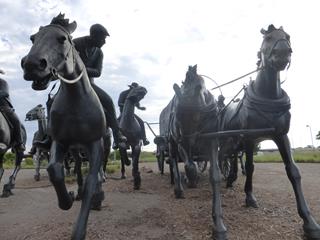
The monument really gives you the feel of the rushing of the participants to the land run, as they race to claim the land. It was an amazing monument and so glad we got to see it. There are 45 figures in total at one and a half times life-size.
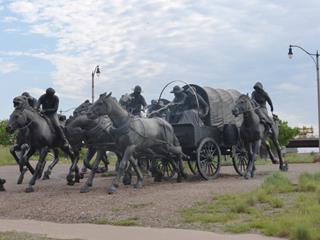
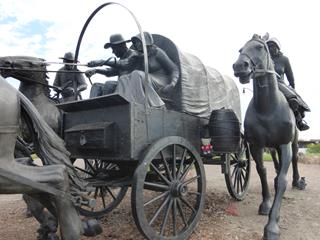
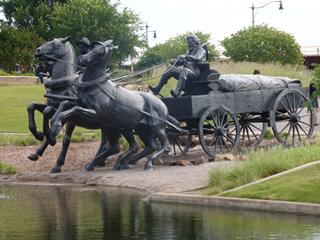
Next we headed over to the Oklahoma City National Memorial and Museum.



 Here we were given a quick overview of the Memorial by a National Park Ranger - Matt - who explained the elements of the memorial. I have to be honest, I know little of the Oklahoma bombing. After this, I'm still pretty much in the dark about the bomb, but I know a lot about the memorial.
Here we were given a quick overview of the Memorial by a National Park Ranger - Matt - who explained the elements of the memorial. I have to be honest, I know little of the Oklahoma bombing. After this, I'm still pretty much in the dark about the bomb, but I know a lot about the memorial.
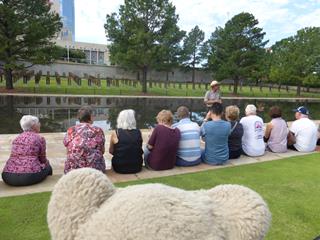
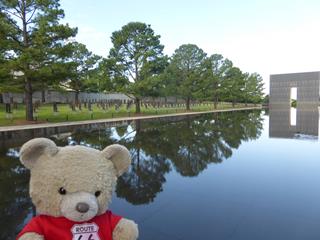
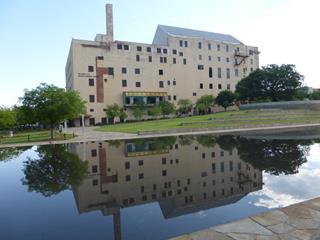
The Memorial comprises several elements. There's the Survivor Tree (below left) an elm which was in the parking lot near to where the bomb went off. Almost 100 years old, it was badly burned and thought lost. With other priorities it was left ignored while other remedial work was undertaken. Within a week, leaves were beginning to grow again so the community demanded the tree be saved to represent rebirth and survival and resilience. A number of other trees have been planted around the Survivor Tree as the Rescuer's Orchard, to represent more than twelve thousand rescue workers who participated in the rescue effort. Three species of trees honour the men, women and dogs, from Oklahoma and beyond, who acted selflessly after the bombing.
The Reflecting Pool (below centre) aims to aid peaceful reflection while at the Memorial. It represents the limitless impact of the event. The pool is where NW 5th Street ran, along which McVeigh accessed the Alfred P Murrah Federal Building alongside which he parked the Ryder truck of explosives. Out of respect for those that died, part of NW 5th Street was permanently closed. The two paths, either side of the pool, are where the sidewalks were before the bomb, the pool being the road.
The Gates of Time (below right) stand at each end of the Reflecting Pool and are marked 9:01 - the last minute of innocence - and 9:03 - the minute after the attack, fixing in time the 9:02 bomb blast of 7000lbs of explosive left in a Ryder truck.
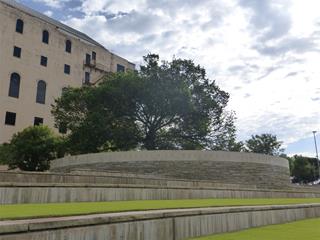
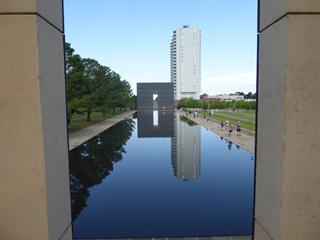
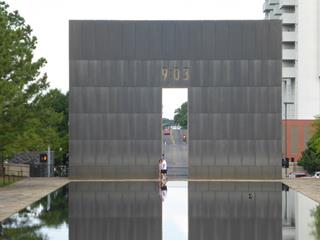
Below is the Survivor Wall. It holds the names of over six hundred survivors of the attack, who were within a one block radius around the building. The granite panels which hold the names were originally from the lobby of the Alfred P Murrah Federal Building and now hang on one of two remaining walls from the building.
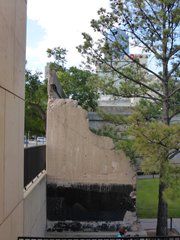
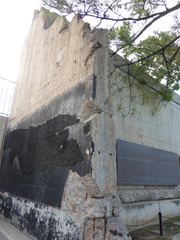
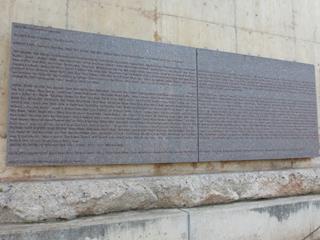
The Field of Chairs lies within the footprint of the building. One hundred and sixty eight empty chairs each have a name etched on them, a reminder of the innocent lives that were lost. Five chairs stand separately, representing those who died outside of the building, those remaining are arranged in nine rows, one for each of the floors of the building. The names are then carried alphabetically. The larger chairs represent the adults while the smaller chairs are for the nineteen children who were killed, fifteen in the daycare centre. Three chairs have two names - these were for pregnant women who died that day. From a bird's eye view, the chairs make the shape of the building.
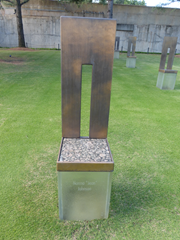
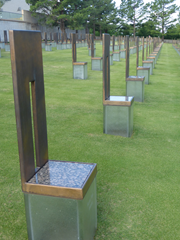
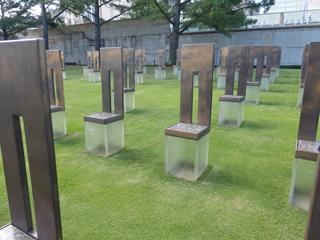
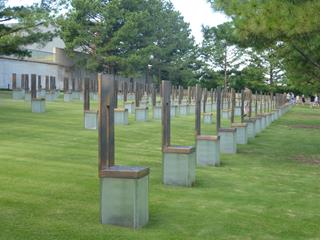
Below left is the Children's Area, standing within the Rescuer's Orchard. Children across the United States helped in the rescue by sending gifts of hope and encouragement through cards, letters, tiles and - of course - teddy bears. The wall, covered with tiles from across America, stands alongside the Children's Area.
The Memorial Fence, below centre, was put in place to restrict access to the site after the blast and became a spontaneous memorial. Individuals left items that helped them or others to heal. Since the bombing, sixty thousand items have been removed from the fence and placed in the archives of the Oklahoma City National Memorial and Museum. Items are still left on the small stretch of fence that remains.
The Centennial Clock was a gift to the Oklahoma City National Memorial Foundation.
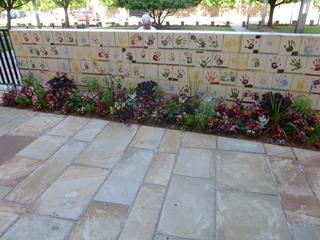
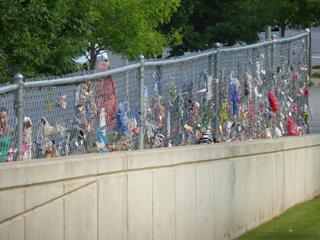
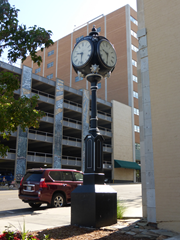

I popped into the Museum building, and took a quick glance around the store - we were on a busy schedule and time was tight, but I didn't find anything I wanted to buy. The magnets were a little expensive. I spotted this chap - is he an American Robin? Can't be bothered to look him up.
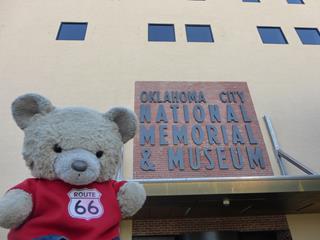
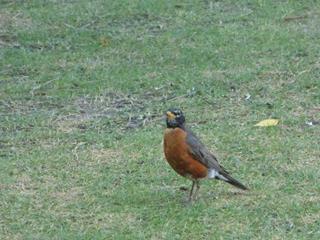
We made another quick photo stop at the Oklahoma State Capitol, which was unexpected and great, as I do like to tick off these capitol buildings. This is the only capitol in the world surrounded by working oil wells. This site was chosen in 1915 and construction was completed in 1917. The dome was actually completed in 2002! It was in the original design but was not completed at that time.
There are a few statues here. Below right is Allan Houser's tribute to Native Americans, As Long as the Waters Flow, which was dedicated in 1989. The name refers to Andrew Jackson's vow to Native Americans that they shall possess their land "as long as the grass grows and the rivers run." That promise didn't last long.
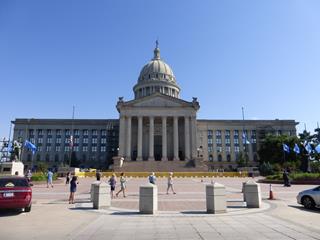
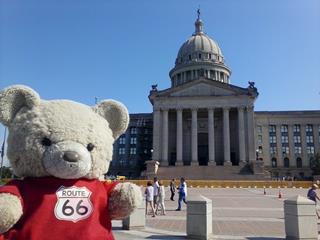
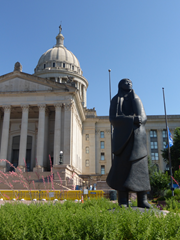
Our next stop was the National Cowboy and Western Heritage Museum.


 We were already behind schecule so we only had forty-five minutes here, which really wasn't enough. In the entrance was a recognisable statue called The End of the Trail, originally designed by James Earle Fraser, a man who spent his childhood on the American frontier.
We were already behind schecule so we only had forty-five minutes here, which really wasn't enough. In the entrance was a recognisable statue called The End of the Trail, originally designed by James Earle Fraser, a man who spent his childhood on the American frontier.
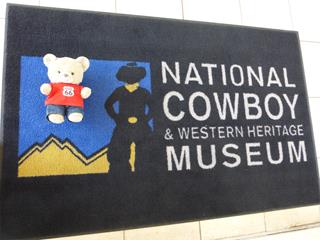
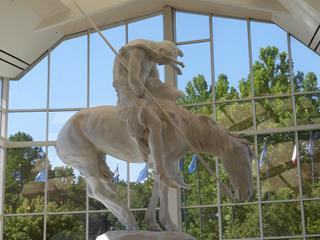
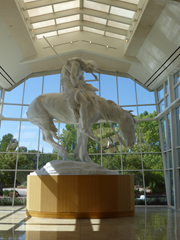
In hindsight, our ability to see stuff was hampered by being given a guide, who wasn't the most concise or driven personality - had we known, we'd have run off and done our own thing! We walked through a hall of western statues, but just had enough time to catch a glimpse as we walked through. We were also told to ask before taking photographs, as some exhibits were restricted - to be honest, every time we asked they said "Yes, fine."
We saw an exhibition on the American Cowboy. The different groups of cowboys, like Buckaroos, Vaqueros, Southwestern Cowboys, Black Cowboys, Native American Cowboys and more! Their description depended on their heritage and their location. We saw the tools of their trade - horse tack (bridles, saddles, chaps, hats and guns).
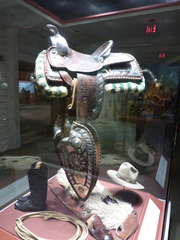
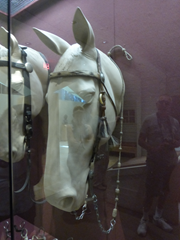
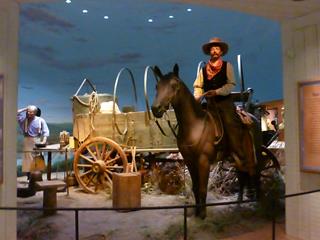
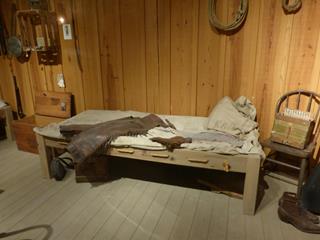
We also got to look at their lifestyle, with a wagon out on the trail and life in the bunkhouse.
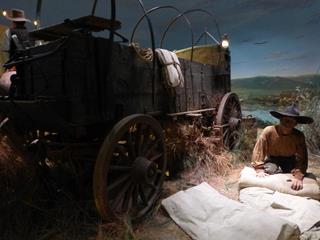
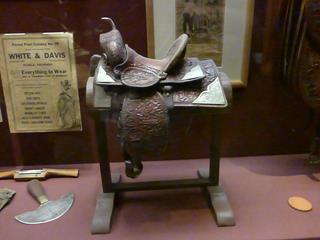
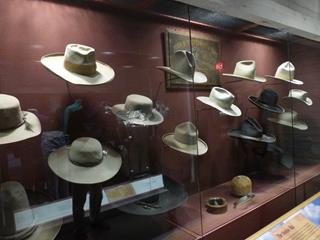
There was a section of the Museum dedicated to movie and TV cowboys through the ages - the Western Performers Gallery - with props, photographs and personal items. They had Roy Rogers and Dale Evans (below left). Rogers, alongside his famous Palomino horse, Trigger,appeared in many movies together. He was one of several singing cowboys. Rogers went on to host a TV show in the 1950s. Next is James "Jimmy" Stewart, who appeared in many great Westerns. The blue and gold suit belongs to The Electric Horseman, played by Robert Redford, in the 1970s. Below right is one of my favourites, Walter Brennan. There were many others too, but you'll have to go check them out.
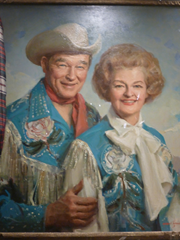
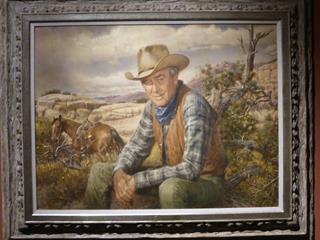
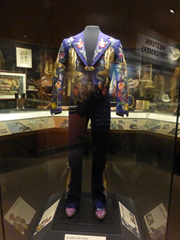
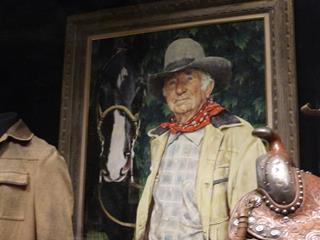
Of course John Wayne had a section here, including the Model 1892 Winchester Rifle, first used in Stagecoach (1939) and other films, including True Grit (1969).
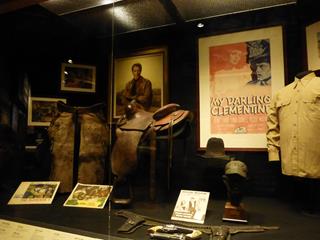
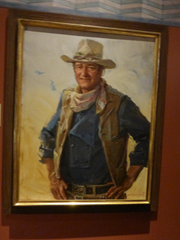
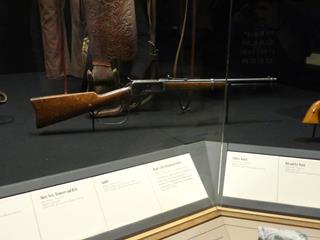
We headed into the American Rodeo section, where six rodeo events are portrayed. Judges score performances in saddle bronc riding, bareback bronc riding and bull riding, while steer wrestling, calf roping and steer roping are timed events. They have a military exhibit but we really didn't have time to look at it. They have a large statue of Ronald Reagan in a corridor which houses many busts of the donors to the Museum.
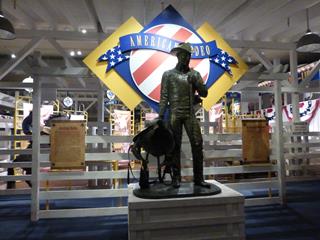
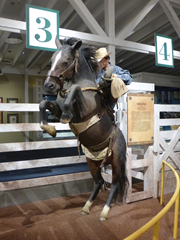
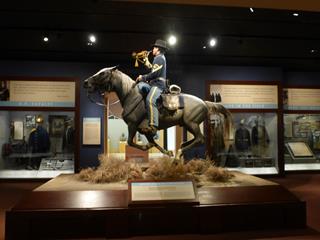
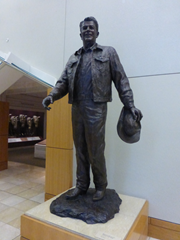
We proceeded into an old town exhibit, Prosperity Junction. The town is just twenty years old, a cattle town in the West. By the turn of the twentieth century, with the advent of the railroad, this has become a prosperous community with kerosene, gas, and even electric lights. They have townsfolk walking around mainstreet, church bulletins and a newspaper to enable guests to find out more about the town. My pictures aren't great as it was very dark in here - whether they are depicting night, saving artifacts from daylight or just trying to make photography difficult, I'm not sure, but I did my best. There's a bank and a school.
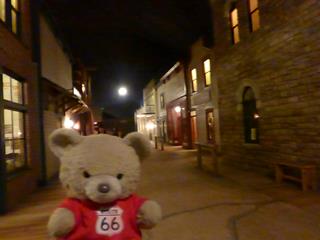
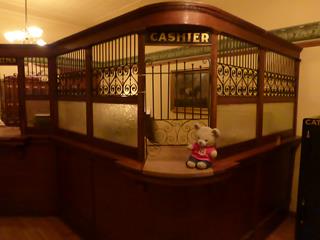
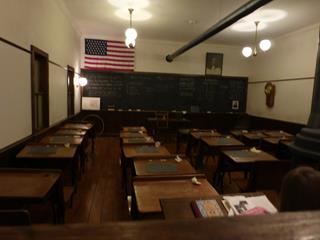
We looked through the window into the store and took a look at the small church. I wasn't impressed with the Sheriff's Office, but that might have had something to do with the jail. Again. Sigh. My assistant is SO predictable!
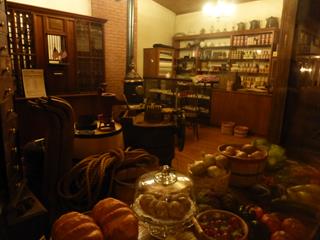
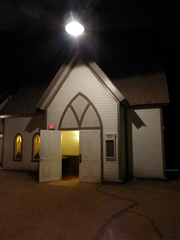
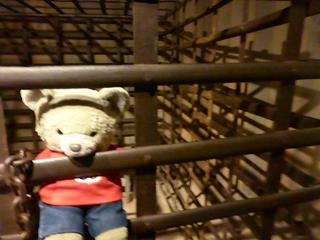
The livery stable was quite large, with several horses and wagons inside. There was also the Silver Dollar Saloon and a printing shop. We spotted this stagecoach, but it was out of reach so I couldn't get a photo of me sitting on it.
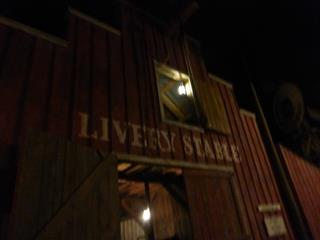
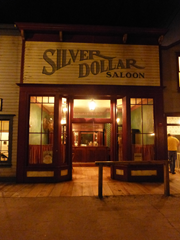
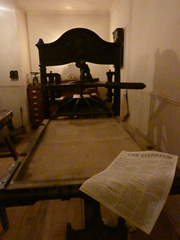
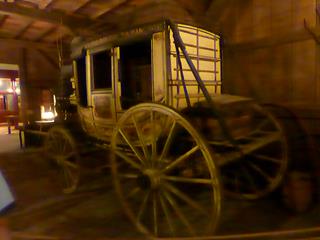
There was just time for a restroom and gift shop stop. They had a ton of stuff in here, but not much that appealed to me - a lot of human clothing and the like - who needs that?
They lost a Ted because of the restrictions on photography. Our visit was a little rushed - it would be easy to spend a couple of hours here rather than the forty-five minutes we had, but that's not unusual. I keep telling you these are introductory tours and we couldn't cram so much in if we stayed two hours everywhere! That said, I do love a Walmart stop but I would have given this one up to stay at the museum a little longer. Ah, but some folks prefer to eat. We bought cookies for the bus (well, the passengers) - there were 66 in the two packets, which sounded right to us.
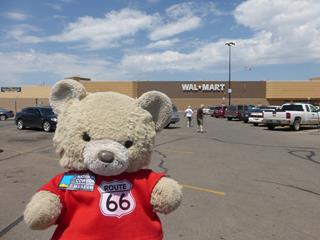
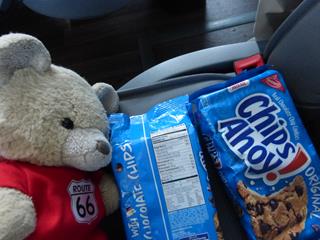
Our first stop after lunch was the Oklahoma Route 66 Museum

 in Clinton, Oklahoma. From the outside it has been designed to look like a motel like you'd find in the heyday.
in Clinton, Oklahoma. From the outside it has been designed to look like a motel like you'd find in the heyday.
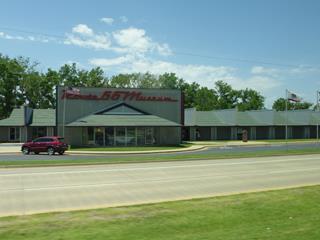
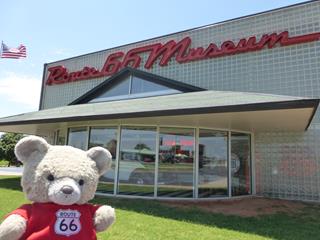
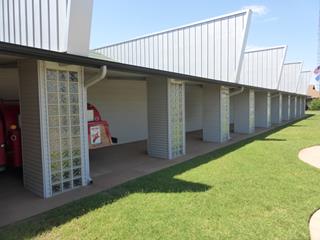
In the lobby we found a 1937 Ford, which is the first car issued to the newly formed Oklahoma Highway Patrol in that year. Now get this - they are still using it! As well as a public relations profile it was recently used to arrest a DUI suspect and take him to jail. (They didn't say how recently, however.) They had this cool Corvette cut-out so I had to get a picture, though it was a little hard to see me.
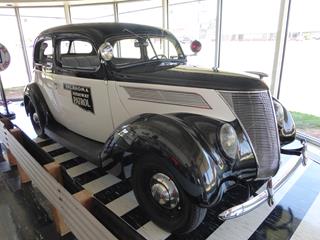
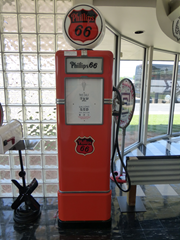
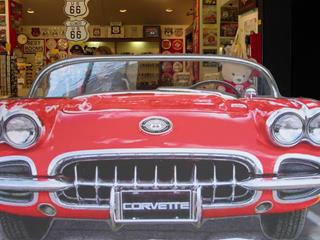
The Federal Government passed the Federal Aid Highway Act in 1921, offering fifty-fifty matching funding for state highway construction. The first plans for what became Route 66 were submitted to the National Good Roads Association (founded 1893) in 1925. At least eighteen trails were used in the creation of Route 66 - eight hundred miles were already paved but sixteen hundred and forty-eight, which were dirt or gravel, were covered with ashphalt or covered by planks.
Before the 1920s, fuel for motor cars was sold by liveries and general stores but as automobiles increased in popularity, gas stations became a Route 66 lifeline. With smaller gas tanks, it was necessary to fill up every seventy miles or so. Between 1920 and 1930 the number of gas stations in the US increased from 15,000 to about 124,000.
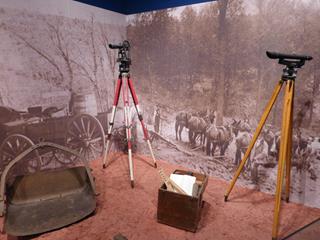
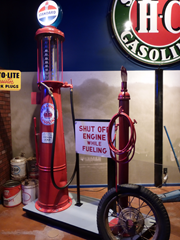
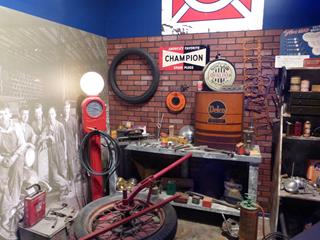
Drought from 1931 to 1940 created the Dust Bowl and an exodus of sixty thousand people from Oklahoma and more from the surrounding states headed to California where they believed many jobs were available. Route 66 became seen as a path to opportunity. In John Steinbeck's The Grapes of Wrath, he said "66 is the mother road, the road of flight." Works projects in the Great Depression of the 1930s led to more than $13 million being spent on roads in Oklahoma, such that the last dirt roads of Route 66 in Oklahoma were paved in 1937.
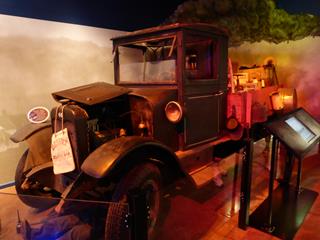
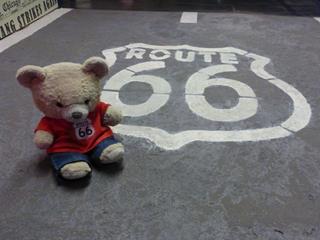
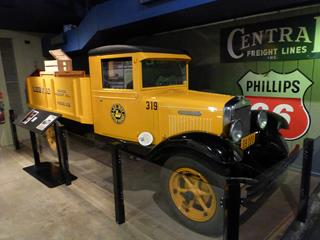
They had a phone box - remember them? What do you mean, no? Go watch Airplane! where all the reporters run into phone boxes like these (and then they fall over). Now, where did I put my Superman costume?
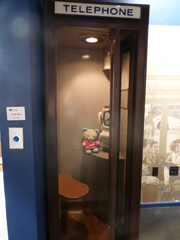
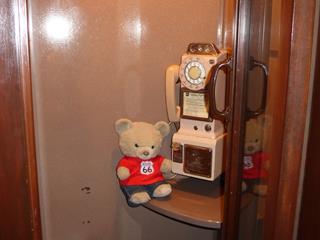
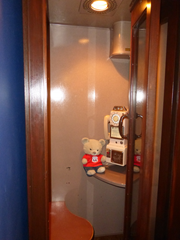
Where there's roads, there are diners! Well, there would be. Beverly and Rubye Osbourne established their first Chicken in the Rough restaurant in 1921. Five years later, Route 66 passed by their door. Their business rapidly spread across the nation.
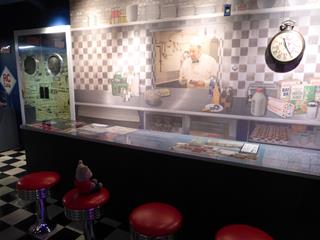
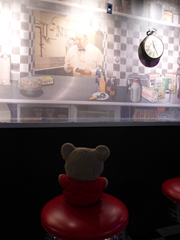
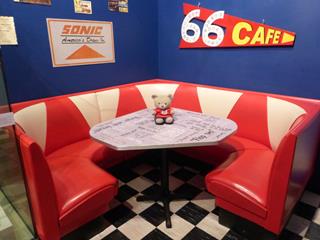
Route 66 also led to the expansion of roadside accommodation. In the 1920s, local merchants set aside campsites near business districts and these expanded to the provision of campsite cabins. By the 1960s the Volkswagen Campervan was very popular.
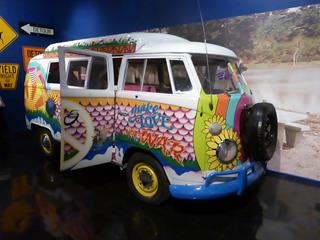
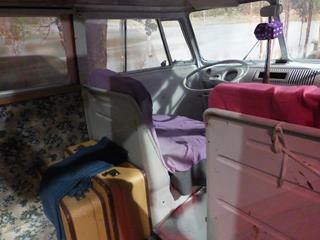
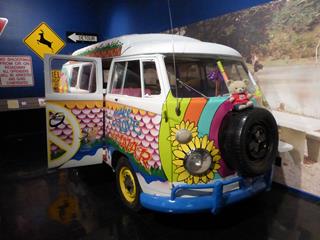
With more leisure time in the 1960s, families would head out along Route 66 for picnics and camping trips like to this campsite.
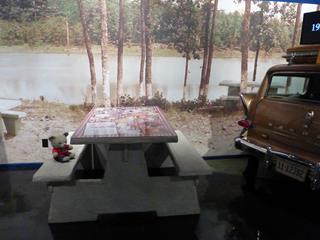
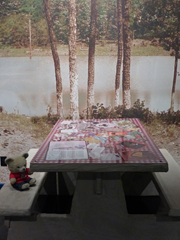
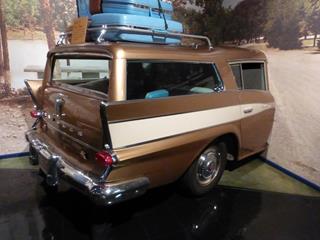
We continued on our journey to what was probably the quirkiest stop of the trip, the Sandhills Curiosity Shop. I'm not quite sure why we stopped here, but, I have to say, the people on the bus seemed to enjoy it! Husband and wife Harley and Annabelle Russell - self-described Mediocre Music Makers loved to entertain travellers in their shop in Erick, Oklahoma. Sadly, Annabelle had died of cancer just months before we arrived and we were one of the first tour groups Harley agreed to entertain solo. Well, he is definitely eccentric! Nothing wrong with that! We took a group photo outside his house.
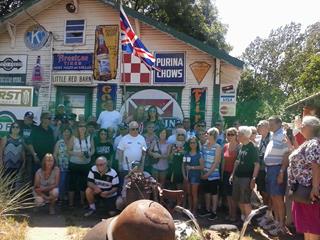
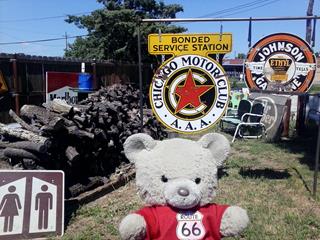
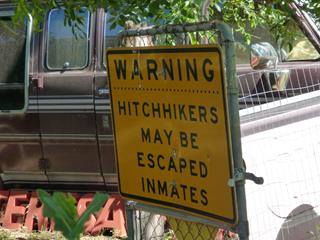
He led us around the back of the house before taking us all on a tour of the inside. Then he took us into his shop which is packed to the brim with thousands of items inluding antiques, guitars, books, signs and more. However, as Harley says "Nothing here is for sale."
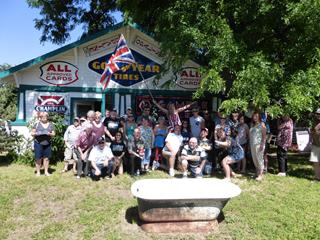
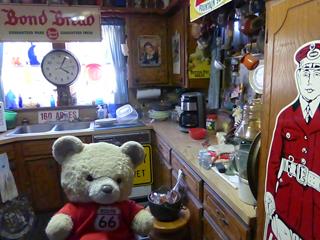
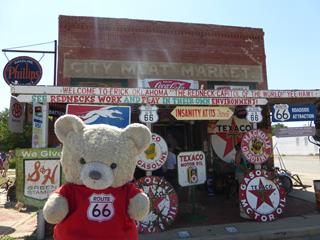
Inside Harley took to the stage, handing out beer and Coke to the crowd who squished into any space they could find. Tambourines were handed out and the show began. With a little help from Yours Truly, of course!
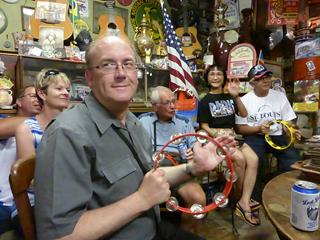
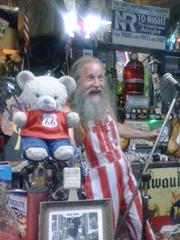
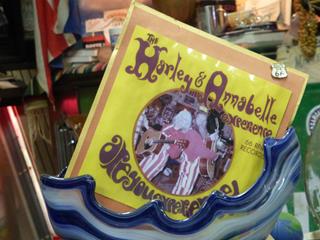
Harley sang us a couple of songs - with audience participation of course.
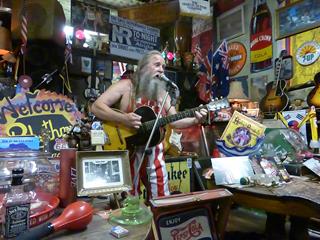
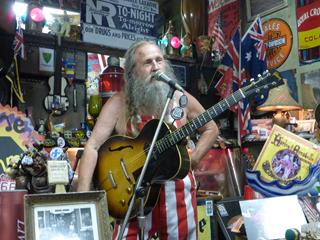
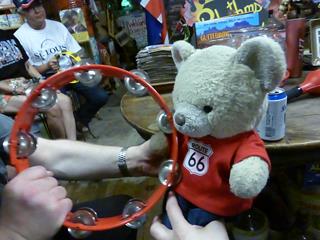
Everyone had a good time - even Paul! We headed back outside for one last group photo.
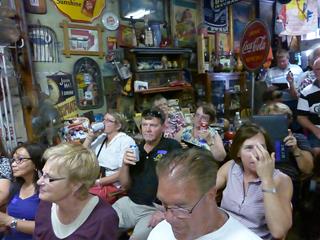
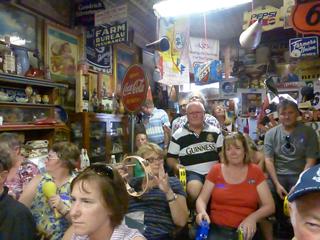
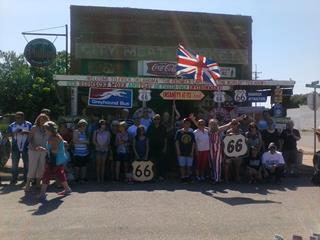
It was time to head to our hotel Drury Inn and Suites Amarillo, Texas.



 Yay! Another hotel with Kickbacks! Our room had two beds, flatscreen TV, fridge, microwave, iron, ironing board, hairdryer and coffee maker.
Yay! Another hotel with Kickbacks! Our room had two beds, flatscreen TV, fridge, microwave, iron, ironing board, hairdryer and coffee maker.
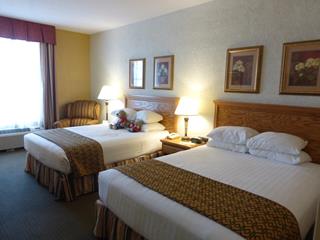
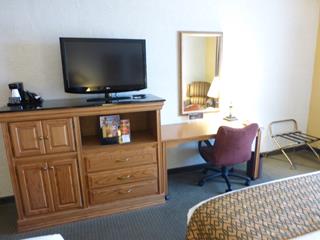
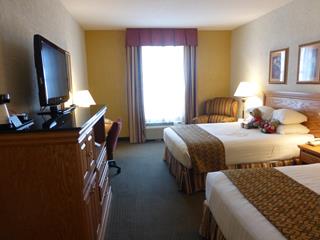
We had spotted a Red Robin Burgers next door (on Google Maps) and my pal Duffy (@DuffyBear17 on Twitter) had told me many times how good they were. We thought we'd get dinner there, so we kept the food intake small this time (just a baked potato, soup and some popcorn). Of course we still had our allotted three drinks each. Meanwhile Dave had decided to take the optional excursion to a local steakhouse.
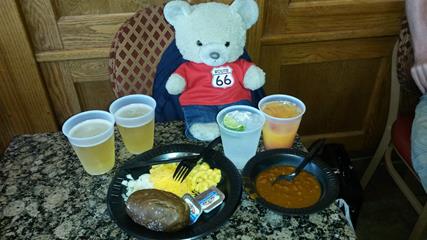
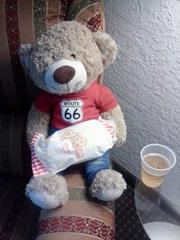
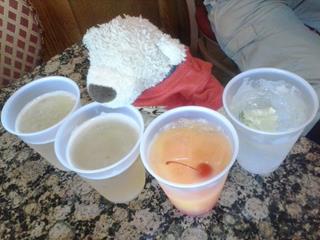
I decided I needed to change my US phone - every time I needed the GPS it decided not to play and I'd spotted there was a Best Buy in a mall across the street from our hotel. We decided to go pick up a new phone. Admittedly a Windows phone - Lumia 635, but for only $40/£25 which is about a third of the price of the same phone in the UK! After we'd been shopping it was gone 9pm and the store was closing.
We saw that the Red Robin Burgers



 closed at 10pm so were a bit worried when we arrived at 9.30pm. When we tried that at a Little Chef in the UK they pretty much told us to get lost. Not here! They showed us to a table, took their time in taking our drinks order (very large beers!) - we asked again, were we okay to order food so near to closing but it wasn't a problem at all. Great way to treat your customers guys. Seriously! We ordered burgers with fries and they were fabulous. We didn't drag out our dinner - we were hungry, but there was no pressure on us at all and some folks who arrived after us were still there when we left. Great restaurant, thanks for the tip Duffy.
closed at 10pm so were a bit worried when we arrived at 9.30pm. When we tried that at a Little Chef in the UK they pretty much told us to get lost. Not here! They showed us to a table, took their time in taking our drinks order (very large beers!) - we asked again, were we okay to order food so near to closing but it wasn't a problem at all. Great way to treat your customers guys. Seriously! We ordered burgers with fries and they were fabulous. We didn't drag out our dinner - we were hungry, but there was no pressure on us at all and some folks who arrived after us were still there when we left. Great restaurant, thanks for the tip Duffy.
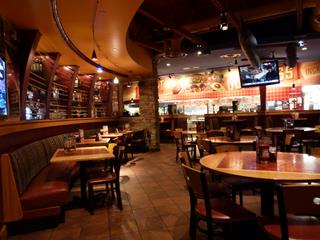
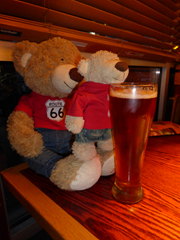
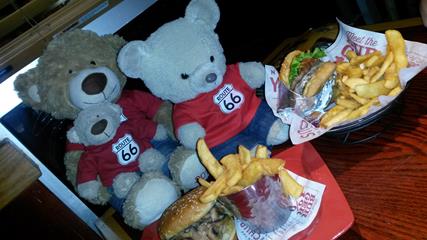
It was getting dark as we made our way back to our hotel and Frank's bag of popcorn for dessert.
Return to previous day ~~~ Go to next day
comments powered by Disqus